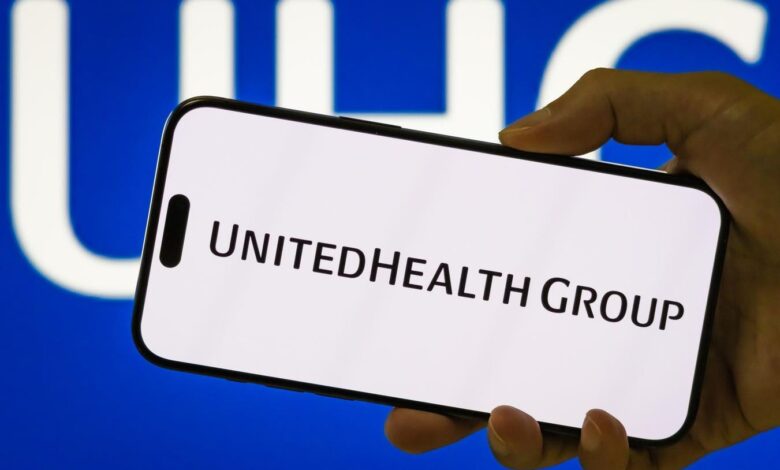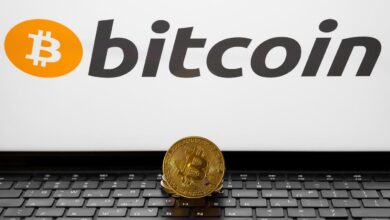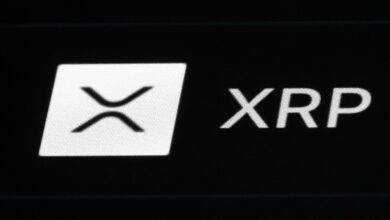UnitedHealth: UNH Stock To $600?

📝 usncan Note: UnitedHealth: UNH Stock To $600?
Disclaimer: This content has been prepared based on currently trending topics to increase your awareness.
CHONGQING, CHINA – JULY 27: In this photo illustration, a person holds a smartphone displaying the logo of UnitedHealth Group Incorporated (NYSE: UNH), a leading American healthcare and insurance company, with the company’s blue UHG branding visible in the background, on July 27, 2025 in Chongqing, China. (Photo illustration by Cheng Xin/Getty Images)
Getty Images
With Warren Buffett’s endorsement renewing investor confidence, the debate shifts from how low UnitedHealth stock could fall to how high it might rebound. At roughly 12 times trailing adjusted earnings versus a three-year average of 25 times, a climb from around $300 to above $600 is plausible—levels the stock touched just a few months ago, before things went south.
That said, if you want upside with less volatility than owning a single stock, consider the High Quality Portfolio. It has comfortably outperformed its benchmark—a blend of the S&P 500, Russell, and S&P MidCap indexes—and has delivered returns exceeding 91% since inception. Also, see – What’s Happening With KDP Stock?
The Recovery Scenario: 2026 Turnaround
While 2025 is effectively a write-off with earnings guidance cut to $16 per share, the real opportunity lies in 2026 and beyond. If UnitedHealth restores profitability to $24 per share—above the current consensus of $19 but within the analyst range of $16 to $30 for 2026—and investors reapply the historical 25x earnings multiple, the stock would reach $600.
The $24 target looks reasonable given UNH’s 2025 earnings expectations were $30 just last year before the medical cost spike. Returning to even $30 in the next couple of years is a tangible possibility as the company addresses its operational challenges.
This outcome depends on two pillars: operational recovery and multiple expansion.
Operational Recovery Catalysts
- Medical Cost Stabilization: The chief headwind has been the 430 basis point worsening in medical cost ratios to 89.4%. A reversal through various levers could materially lift profitability.
- Premium Rate Increases: Insurers typically adjust premiums annually. As medical inflation becomes more predictable, UNH can price future policies more precisely, gradually restoring margins.
- Provider Contract Renegotiations: UnitedHealth’s scale gives it leverage to secure better rates with hospitals and providers, using its vast network to obtain more favorable terms.
- Utilization Management: Stronger prior authorization, care management, and value-based initiatives can curb unnecessary spending while maintaining quality outcomes.
- Optum Growth Acceleration: The diversified Optum segment carries higher margins and serves as a growth engine. Expanding care delivery, tech solutions, and pharmacy benefits can offset insurance pressure and lift overall profitability.
- Operational Efficiency: Recent leadership changes, though initially unsettling, may introduce fresh approaches to cost control and enterprise-wide optimization.
These recovery levers aren’t novel—they are standard industry tools that UnitedHealth has executed successfully before. The surge in medical costs surprised even the company, but with the issue identified, UNH’s experienced team and deep domain expertise position it to implement corrections and return to traditional performance levels. Additionally, see – Buy or Fear UNH Stock?
Multiple Expansion Drivers
- Restored Investor Confidence: Once costs stabilize and earnings visibility improves, investors are likely to reward the stock with higher multiples; healthcare often commands premiums given its defensive, essential nature.
- Buffett Halo Effect: Berkshire Hathaway’s involvement adds credibility and could draw in institutions that track Buffett’s moves, supporting valuation.
- Dividend Reliability: Sustaining and growing the dividend through recovery would signal confidence and attract income-focused investors, aiding multiple expansion.
- Industry Leadership Premium: As the largest, most diversified healthcare services player, UNH has historically earned a premium reflecting its leadership and scale.
The Mathematics of Recovery
Current markers indicate the upside is attainable:
- Current Price: Around $300
- Current Multiple: 12x trailing earnings
- Historical Average Multiple: 25x
- Target 2026 Earnings: $24 per share
If UnitedHealth delivers $24 in earnings and garners a 25x multiple, the stock would trade near $600—doubling from today’s levels. Even a more conservative 20x multiple implies $480, or about 60% upside. See – UnitedHealth’s Valuation Ratios Comparison – for more detail.
Revenue Growth Foundation
Unlike many challenged companies, UnitedHealth faces no revenue growth challenges. Demand remains strong, supported by an aging population and higher utilization. Medicare Advantage continues to expand, and employer-sponsored insurance is steady. This backdrop provides a solid base for margin recovery.
Key Risks to the Upside Thesis
- Extended Medical Cost Pressures: If healthcare inflation persists or utilization outpaces premium resets, margin restoration could slip beyond 2026.
- Regulatory Headwinds: Tighter scrutiny, possible Medicare Advantage rate cuts, or policy shifts favoring public options could constrain pricing and growth.
- Competitive Dynamics: Fierce competition from incumbents or new entrants could pressure pricing and share, limiting margin recovery.
- Economic Downturn: A broader slowdown could trim employer-sponsored enrollment while pushing medical costs higher as deferred care worsens.
The Verdict
UnitedHealth’s route to $600 rests on a clear but demanding equation: operational recovery that lifts earnings back to $24 per share, paired with a re-rating to historical multiples. With Buffett’s validation, an attractive starting valuation, and a strong competitive position, the upside case looks credible.
The key catalyst will be signs of medical cost stabilization, likely emerging through 2026 quarterly prints. Once investors believe the worst is past, the combination of earnings recovery and multiple expansion could deliver meaningful gains for patient investors able to stomach near-term volatility.
Of course, we could be wrong and the market may wait for firmer proof before re-rating. Even so, for a 2–3 year horizon, buying UNH around current levels could produce robust returns. Investors should, however, be ready for additional downside of 20–30% if conditions fail to improve over the next few quarters.
See, there’s always meaningful risk in owning a single—or just a few—stocks. Consider the 30-stock Trefis High Quality (HQ) Portfolio, which has a track record of comfortably outperforming the S&P 500 over the past 4 years. Why is that? As a group, HQ Portfolio stocks have delivered better returns with less risk versus the benchmark; less of a roller-coaster, as shown in HQ Portfolio performance metrics.




